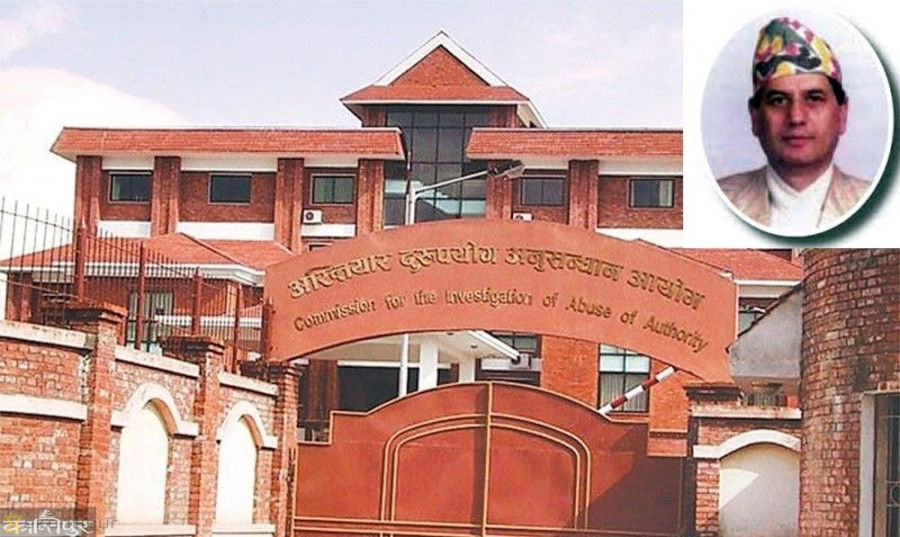National
Polymer note printing: Ex-NRB governor Rawal among three faces corruption case
The Commission for the Investigation of Abuse of Authority (CIAA) on Thursday filed a corruption case at the Special Court against former central bank governor Tilak Rawal and two others for their alleged role in awarding the contract of printing ten rupee polymer notes to Note Printing Australia (NPA) Limited 16 years ago.
The Commission for the Investigation of Abuse of Authority (CIAA) on Thursday filed a corruption case at the Special Court against former central bank governor Tilak Rawal and two others for their alleged role in awarding the contract of printing ten rupee polymer notes to Note Printing Australia (NPA) Limited 16 years ago.
The anti-graft body has also named Upendra Keshari Paudyal, the then chief of Note Department of Nepal Rastra Bank, and Himalaya Bahadur Pande, the NPA agent in Nepal, in its charge sheet. It has sought recovery of Rs9.1 million each from Rawal, Paudyal and Pande.
The CIAA has accused them of leaking the decisions of the NRB management committee, receiving the draft of contract from the NPA before calling the tender, directing a Germany-based company to hand over the printing machine to Australia and ordering the NPA to prepare the banknote design before awarding the contract. The CIAA claimed that the officials under the influence of local agent excluded the commission amount to dodge revenue.
The scandal first came into light in 2011 after a probe carried out by the Australian central bank, Reserve Bank of Australia, confirmed that bribe was offered by the NPA to the Nepali officials.
The Australian government had initiated a probe into the case following a news report on The Sydney Morning Herald, mentioning that Himalayan Pande, the NPA agent in Nepal, had bribed Nepali politicians and central bank officials from his commission to get the contract. The report also created ripples in Nepal as the central bank had stopped printing polymer notes due to their inferior quality.
The NRB officials said both the central bank and the CIAA had information about
the alleged irregularities much before the Australian government initiated the probe. Sources said both the NRB and the CIAA had carried out inquiries after they were informed of the bribery via an unnamed email in 2007. But these investigations were kept secret.
The notes were printed in two instalments and brought into circulation. Given their inferior quality and low acceptance among the public, printing of these notes was eventually stopped.
The polymer notes were first printed when Rawal was the governor of the NRB. The first installment of the notes was circulated during his tenure and the second instalment was brought after Bijaya Nath Bhattarai assumed the governor’s role.
The NRB and the NPA had signed a contract for printing 50 million units of plastic ten-rupee banknotes on May 24, 2002. Rawal and NPA’s then CEO John Leekenby had signed the agreement.
A senior NRB official said the inferior quality of the notes suggest irregularities. Till then, central bank used to print paper currency. The decision to print low denomination plastic notes was taken, citing lower counterfeit risk.
The NRB official said the polymer notes had incurred the central bank a heavy financial loss.
“While the Australian government instantly started investigation into the case, the CIAA since 2009 has only been collecting documents related to the case from the central bank,” he said.
Former governor Rawal has denied any wrongdoing. He insisted that the polymer notes were of better quality compared to the paper ones.
“I had given my clarification to the CIAA two years ago,” he said, adding that he would nonetheless accept the court’s verdict.




 18.12°C Kathmandu
18.12°C Kathmandu














